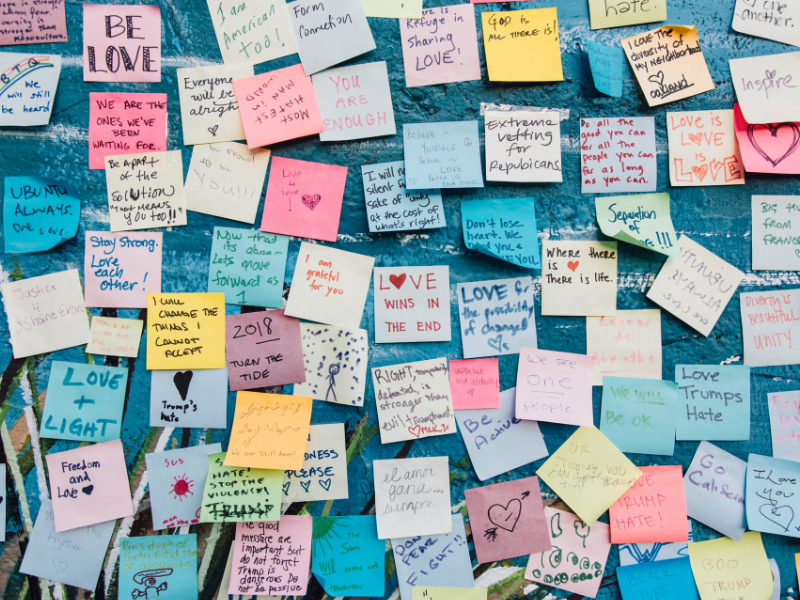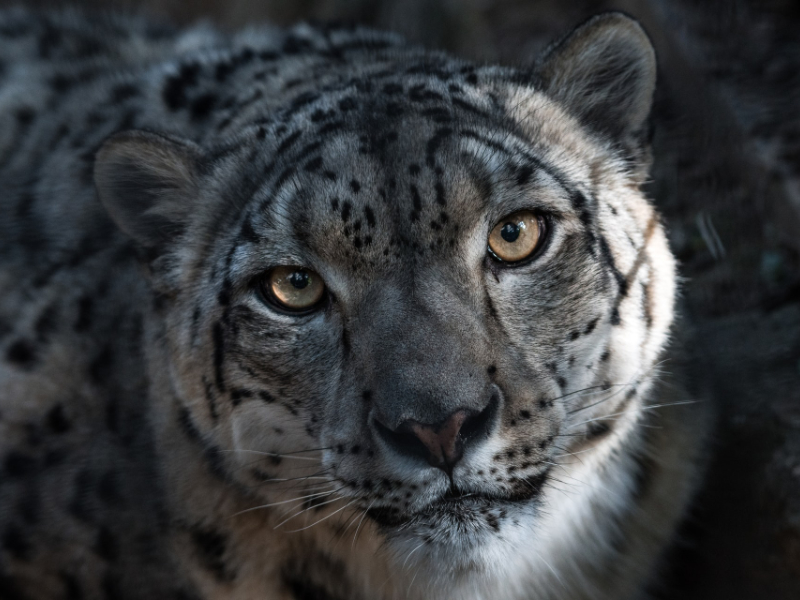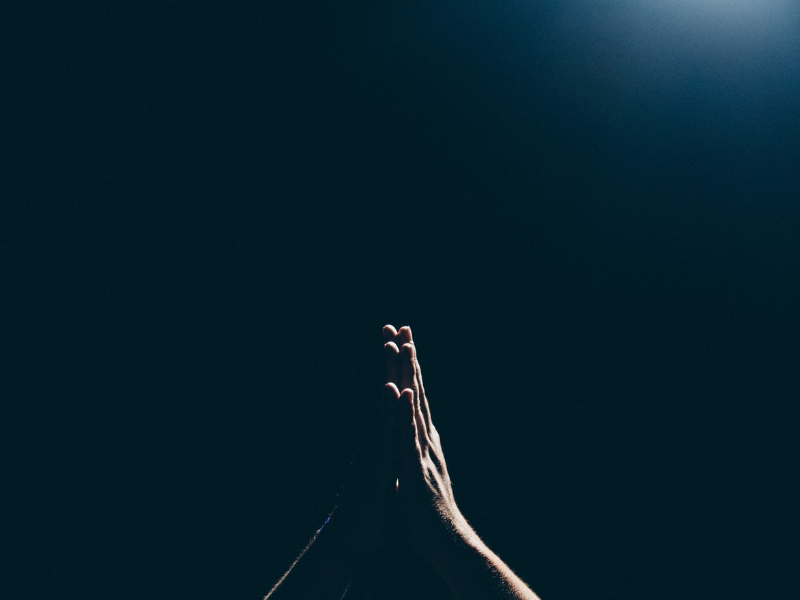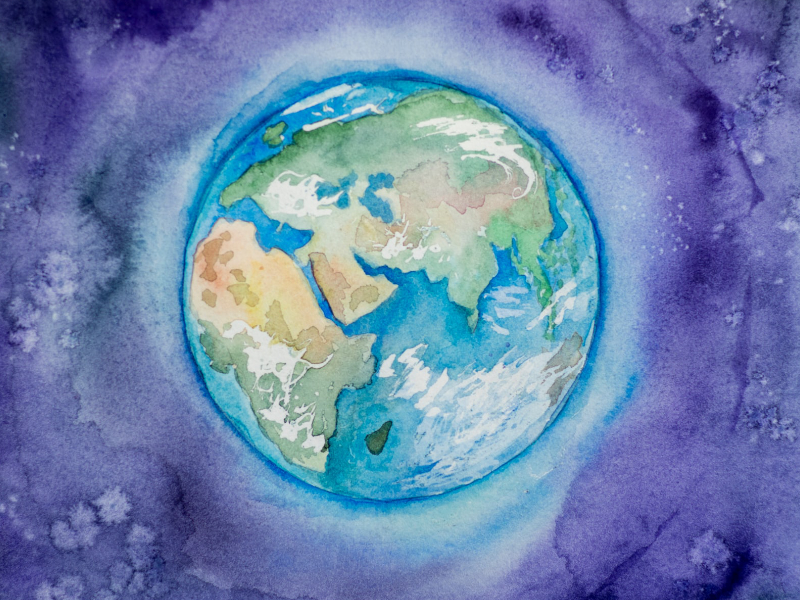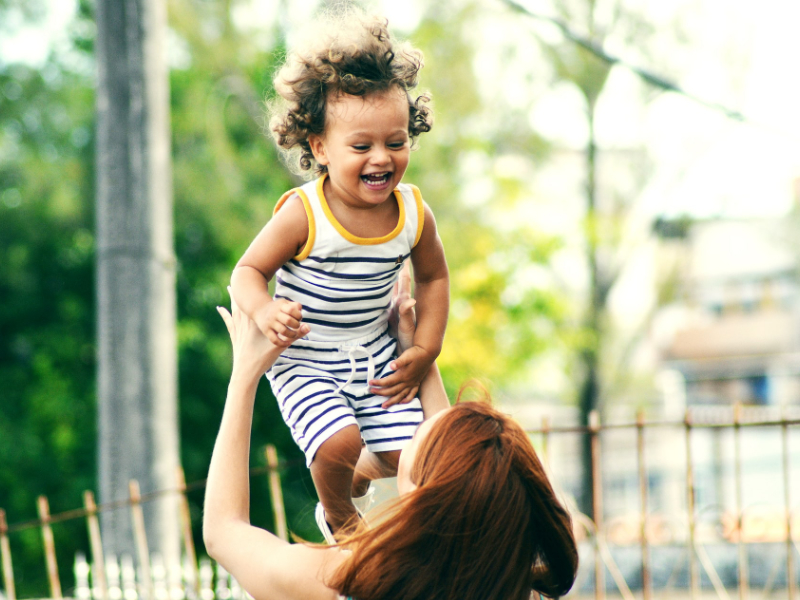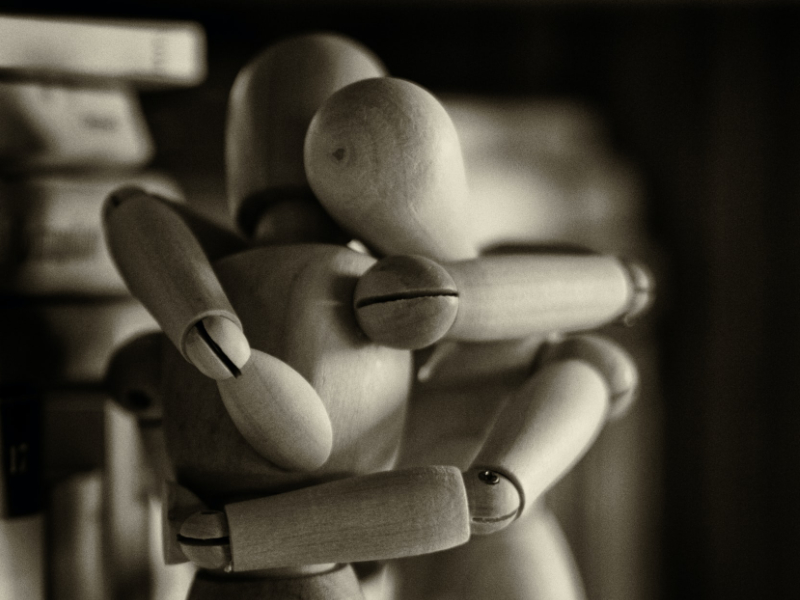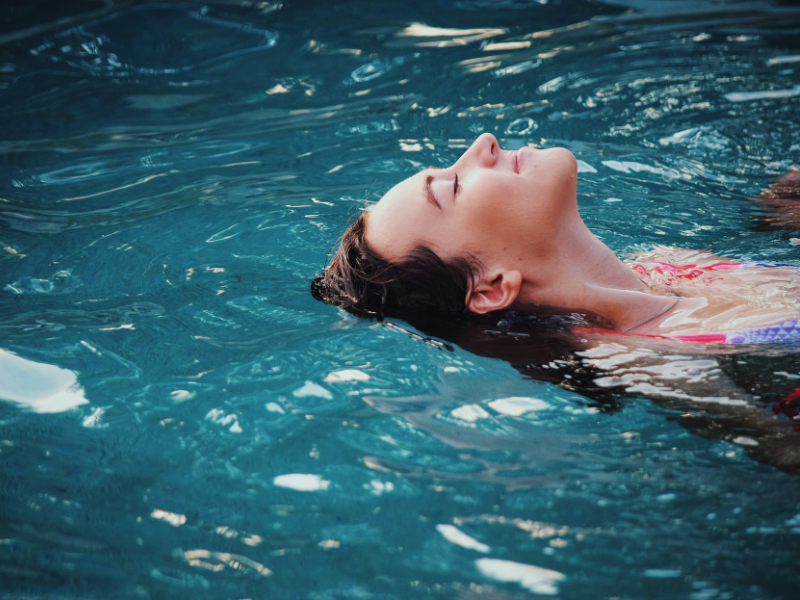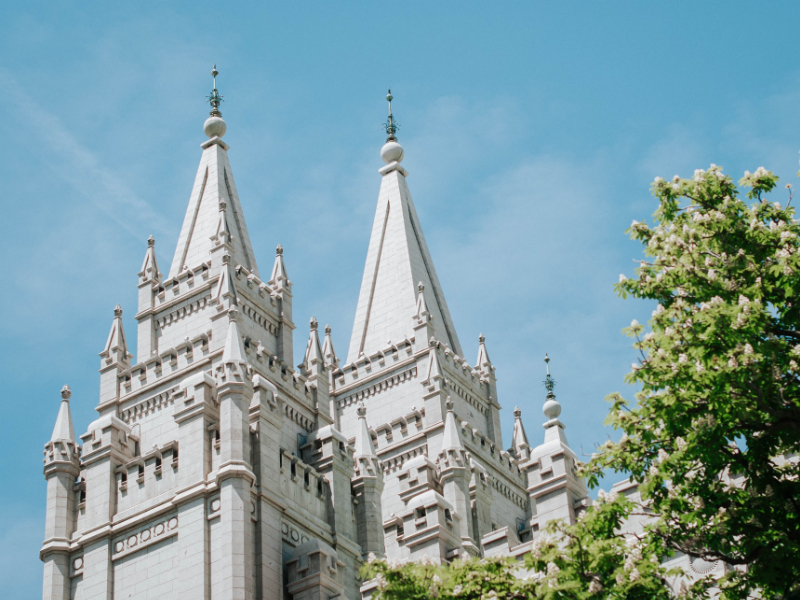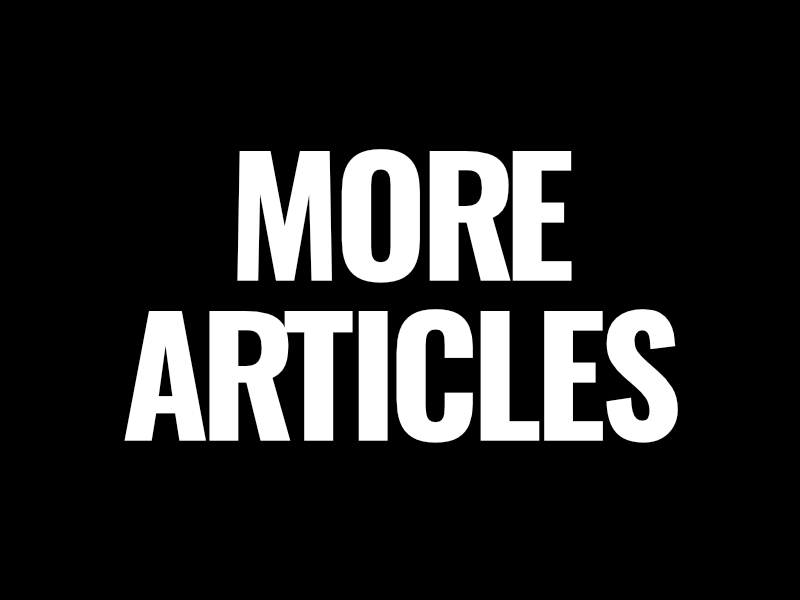Nurturing the Sacred Garden
– To Parents & Teachers | My Heroes –

Life is good. As if there aren’t enough miracles to be grateful for — my heart, breath, and awareness, the sun’s warmth, the earth’s protection, the most present and awake partner, my Snow Leopard guardian angel, exemplary moral parents, the list goes on — I have been graced with four of the most curious, creative, playful, loving, and just downright good children.
Each is an undeniable testament to their mother — to her astonishing and powerful presence, to her wisdom, to the keen awareness she places around her words and actions, which she paints with such remarkable tact and beauty, to her unyielding commitment to honesty, to truth … I digress.
God, I love her. And, god, I love my kids. And there’s nothing I want more than for them to be happy, to be free from suffering. I want to do everything I can to prepare the soil for these precious babies to blossom, to help each of them sprout freely — according to their own impulses — into the unique, awe-inspiring flowers that are contained in each of them.
What a sacred responsibility! If you have any pointers, please share them with me. I would love any advice I can get. I’m just a kid myself — we all are, even though so many of us pretend we’re not. So, don’t take what I have to share in this article too seriously. But hopefully you parents or teachers out there might find a thing or two below to help you nurture the sacred garden.
In any case, you are my hero. Thank you for taking care of our precious seeds. I hope you can feel all the love and gratitude I’m sending you.

Seeing Beyond – The Human
What do you see when you look at a seed? Well, there’s its obvious physical characteristics that appear through our immediate sense perception — it’s a brown, roughly-textured, oval-shaped shell.
This is one way to look at it, though just one. We can look past the physical body with thought. We can zoom out to a higher perspective and see that the seed is not static. With the right conditions — soil, water — it also has a life force, a striving toward something. It’s unfolding from seed to bloom. And its germ may even be carried on through pollination.
To bring our gardens to full fruition, then, we must look at our children from these higher perspectives. We must see past our immediate senses. We must see with much grander vision.
So, how can we look at the human? From what higher perspectives can we stand as parents and teachers? I can think of four distinguishable and useful perspectives: (1) the physical body, (2) the life body, (3) the sentient body, and (4) the “I” or the ego. (This list isn’t meant to be exhaustive — what have I missed? How do we want to look at the human? What problems are we solving?)

The Physical Body
Our physical body is only a small part of our nature. But we need to take this part into consideration. Our kids blood, organs, and limbs are bound to the same physical laws that govern the earth, sun, and moon, as well as the rest of what we may call the ‘lifeless’ world.
We want our physical bodies to be healthy. We need our organs and bodily systems to grow and function properly so that we can breathe, move, hear, see, smell, and think. We need to eat the right foods so our bodies get the energy they need to navigate the world. Our cells need good fats and proteins, vitamins and minerals, to work properly — to allow the insulin in our blood, say, to transport glucose into our cells efficiently.
It’s important, then, with so much of our experiential lives relying on the physical health of our bodies that we become aware of the physical aspects of the human as well as those physical forces that penetrate it.
The Life Body
If we step to a higher realm, we can see that, in addition to the physical body, there is also a vital force — or life body — inherent in all living things. It flows through organisms and produces the phenomena we call life.
This vital force or life body continuously acts upon and shapes the physical body. It brings about growth, reproduction, and changes on the physical plane through some striving force. In a way, it inhabits the physical body. It is its architect. The physical body is an expression — a painting — of the life body.
The life body is contained in all living things — plants, animals, and humans. But for humans and other mammals with neural networks that allow them to learn through experience, this life body is of particular importance for the development of our unconscious character and behavioral habit patterns. It is important, then, to know what forces act on this body, and thereby shape our physical bodies and their expressions or actions in the world.
The Sentient Body
If we step again to a higher perspective, we’ll discover yet another body: that parameter of the human being whose walls encompass all that can be known or experienced. This conscious — or sentient body — makes up our souls. It’s the vehicle of experience — of our passions and impulses, pains and pleasures, desires, and aversions.
Unlike a plant, which likely has no conscious sensations and which reacts only algorithmically to external stimuli such as light hitting its leaves, the human on the other hand can feel or experience a range of external and internal stimuli. The outer and inner world are brought under the light of awareness. Our thoughts, passions, desires, and aversions all shine through awareness. The sentient body, then, is the vehicle of sensation, of conscious life.
Understanding the sentient body is important because it is the only place where importance, value, meaning, or any thing can be known at all. What forces act upon and mold it?

The “I” or Ego
The fourth body — the “I” — is unlike the other bodies. Ponder the “I” and you will discover, among many other mind-bending things, that it is the only word that can’t be shared. We can all call a star “star,” anger “anger,” and change “change.” But no one can share the “I” — none of us can use “I” to designate another person, thing, or process. The “I” can’t be removed from you. Humans who can say “I” are a world entirely unto themselves!
“I am the I am” (Exodus 3:14)
The “I” encompasses the higher soul of humankind. For it is only through the “I”, working outward from itself, that we can transcend our baser natures and other three bodies. For until we are fully aware of it, we are like a newborn enslaved entirely to our environment and genes, to our baser passions, impulses, desires, and aversions. It is only after we become aware of our “I” that we can then remove or lift our ‘selves’ up out of our dogmas — out of our genes and cultural inheritances. And, with some discipline and hard work, the “I” can even lift itself up to the highest realm: the cosmic realm; it can become a free citizen and participant of Love, or the cosmos.
This of course doesn’t happen all at once, but rather in progression. When a human is just beginning to rise above the animal, when her “I” is just being kindled, she is still largely bound to the unconscious processes of the physical and life bodies. What her sentient body will experience, then, is mostly an expression of those baser passions, desires, and aversions that were shaped by natural selection, the aim of which is merely to survive and replicate, as well as by those cultural beliefs and traditions she was born into.
But once the “I” is acquired and strengthened a bit, it can then begin to work on and reshape the other bodies. First, it will affect the sentient body — it will reshape our experience; our passions, pleasures, and pains, which will refine and redirect our moral aims. And this new morality, this reshaping of the sentient body will, in turn, transform the life body — it will reshape our neural pathways, our habits, which will result in a change to our unconscious temperament and character. And this transformation, in turn, will impact our physical bodies — their movements and expressions in the world as well as our actual brains (We can see directly through neuroimaging that the “I” makes physical changes to our brains through the beliefs it adopts.)

Okay. Now that we’ve seen the human in four distinguishable parts, let’s look briefly at the birth and development of the first three bodies before we move onto the practical stuff. (I mention only the first three because I will save the endlessly fascinating ‘I’ for another time.)
Four Births
Before physical birth, the human is surrounded by the physical body of its mother: the womb. It’s not yet in contact with the outside world. Its entire environment is the physical body of the mother’s womb, and the womb alone works on it as it grows and ripens.
Physical Birth
Only after birth can the physical world then begin to work on and shape the human. But just as as the human child was once surrounded by the womb, from birth until about the time a child gets a full set of new teeth, the child will be surrounded by another envelope: the life envelope.
During this stage, many of the physical organs — the sensory organs and the brain systems that shape our outward behavioral patterns and emotions — develop as the child navigates her new physical and social planes. These organs and networks, then, with the force of the genes, will be shaped almost exclusively by the child’s immediate physical environment — by the people and settings around her.
Life Birth
Finally, once the life envelope dissolves around the time a child’s second teeth grow in, the child’s inner world of feelings and imagination will largely begin to influence and shape the child. But just as as the child was once surrounded by the physical and life envelopes, the child will now be surrounded by yet another envelope: the intellectual envelope, which remains largely intact until about puberty (though too many schools and parents try to develop this far too early, thereby stifling the child’s inner development, her world of imagination, feelings, and emotions).
It is during this stage that the child’s inner expressions — her temperment, conscience, and moral imagination — will take their foundational shapes. Here, a child will begin to take guidance from the inner meaning of things. Her soul will build a relation with the outer and social worlds. Her knowledge of this spirit, non-material world will be shaped largely by picture-stories, music, social relations, all of which will spark and cultivate a large range of inner feelings.
Sentient Birth
Upon full maturation of the sexual organs, when the child is released from all three of its protective sheaths, she will then be ready to engage her intellect — she will then be ready to explore the world of concepts and build judgments and opinions around them, which she will do with the “I”.

Alright. Now to the practical stuff. How, with our new understanding, can we in each stage of development help our children and their component parts bloom?
Stage 1 – Nurturing the Physical Body
Because, upon birth to the change of teeth, a child is shaped almost entirely by their immediate physical environment, it’s imperative that we create the right social and physical environments for our children in this first stage of life.
Socially, we need to keep teachers and friends around that outwardly radiate love, happiness, wonder, and a reverence for life, so that these behavioral traits can mold the forms of those physical systems involved.
And we must also let our child spend time in nature nature, with trees and water, rich landscapes and open spaces. We must also fill our child’s environment, our homes, with beautiful shapes, colors, odors, sounds, textures, tastes, etc., if our children’s sensory organs are to develop to their full capacities.
For parents and teachers, it may be useful to bear in mind two words for this stage of development: imitation and example.
We all know that humans are imitative creatures — in fact, it turns out we’re more imitative than monkeys. And, if you’ve ever spent any time around kids, for no age in life is this truer than the first stage of childhood. And when children imitate, in the process, their physical organs are being cast into their foundational forms. Just as our muscles grow firm and strong when we work out, so too do the brain and sensory organs when they receive the right information from the environment.
Without the right physical and social environments, without a beautiful and rich sensory environment, without outwardly kind and loving people around, a child’s organs and neural patterns or habits will have shaky foundations. Growth takes place in later periods as well. But throughout the rest of life growth will be based on what is developed in this first stage of life. Whatever is done here, then, will be hard to undo later.
Note that it’s not conceptual talk or authority that influence a child in this stage, but rather what adults do visibly before the child’s eyes. Authoritative demands and warnings during this period do very little compared to your own actions. If you say one thing but act another way, the child will learn not from your words but from your actions. (Words don’t mean much yet — they’re dry and lifeless.)
Another thing to recognize during this stage is that the physical body creates its own scale to measure desires and aversions through pleasure and pain. So, here it’s important to pay especially close attention to how conditions affect and cultivate both healthy and unhealthy desires, cravings, and aversions.
The failure to cultivate healthy desires may happen, for example, in regard to a child’s relation to food. A child may be overfed with junk that cultivates an unhealthy desire and appetite for food. But if you feed a child meals that are well spaced out and contain proper nutrients, her appetite and preference for wholesome foods — and water! — will be more concretely established.
Finally, it’s worth noting the value of music. Children songs make beautiful, rhythmical impressions on the senses, which can provide the child with more richness, appreciation, and reverence later in life for the magic of sound and for the rhythms of earth and life that surround us. The more alive and vibrant the impressions on the heart and ear the better.

Stage 2 – Nurturing the Life Body
With the change of teeth, when the life body takes off its protective cloak, the time is then ripe for us — parents and teachers — to help shape the life body by (carefully and tactfully!) directing our kiddos’ imaginations. For they will now begin to take guidance from the inner meaning and value of things, which will then influence their moral and spiritual life moving forward.
Just as before the age of seven we have to provide an external physical pattern for our children to copy, we must now bring into the child’s imagination things that spark good and wholesome inner states — things that fill our children with awe, compassion, and other deep spiritual virtues. And we can do this primarily through the use of picture-stories and allegories. Colorful stories and allegories will help spark a child’s imagination, which will then speak to the child’s soul and guide her morality moving forward.
It’s not dry, abstract concepts that work on the growing life body, but rather what is seen — not with her external senses but with her mind’s eye, with her imagination. Let her soak in feelings of the secrets of existence. Let her, from her own inner sense of beauty, come to understand that the good is beautiful, and that the bad or unwholesome is ugly. Guide her by placing in front of her stories or living examples that awaken in her feelings of goodness, justice, and beauty.
It’s important to note, though, that when you speak in parables and pictures, it’s not just what is spoken or shown that works on the child. It’s also the sincerity and conviction that flows from you to child, from your voice and from your body. If you don’t speak with sincerity, if you don’t speak from the heart and are not truly convicted in the belief behind the parable, no lasting impression will be made on the child. All of our words and actions must show conviction, a living feeling, warmth, and color. For knowledge that doesn’t receive fresh nourishment continually from these spiritual streams is dry and dead.
What a child sees directly in her heroes or teachers with her mind’s eye must, for her, become authority — authority not compelled by force, but authority that is accepted naturally through an inner reverence and veneration for that person, an authority sparked by her own inner human capacities for feeling.
The beautiful words of a poet who said, “Everyone must choose their heroes, in whose footsteps they will tread as they carve out their paths to the heights of Olympus,” have special meaning, then, during this time of life. Because, above all, it will be those figures whose moral character the child venerates that will shape her morality.
This brings me to the strongest of all the impulses that can work on the life body: a deep veneration and reverence for the Divine, for Life, for Love.
It will be near impossible for a child’s will or character to develop fully if he cannot unveil in this period of childhood the soul’s impulse for connection, for unity, for harmony, for unbounded Love. How people feel about their place and part in the cosmic whole is expressed in the their will. And if a person doesn’t feel inextricably linked to the Divine, to God, the Cosmos — if she doesn’t know Love directly — she will feel uncertain, divided, anxious, and incomplete.
So much of value can be done with even the simplest resources if only a child’s parents or teachers have experienced this awe-inspiring reverence directly. You will see them wearing it like clothes. Joy and happiness in life, a love for all existence, a creative power and energy for good work, a sense of marvel and beauty will radiate outward from their entire being and impact everyone they encounter.
Her relationships with people, with plants and animals, with the sun, earth, and moon will become so magnificent, so beautiful, so rich under this influence!
Another thing that is particularly important during this period is memory. It’s true that our education system puts a lot of emphasis on memory, but in doing so it demands an intellectual understanding of what is being memorized. This is a mistake. We must not dry up and imprison a child’s mind by filling it with intellectual concepts too early, before the child has developed her inner world on its own accord, unadulterated. She must first know her inner world directly before she can make intellectual judgments about it.
The famous spiritual teacher Krishnamurti said that once a child learns the concept ‘bird’, he no longer sees a bird but only the dry and lifeless concept ‘bird.’
Developing a child’s memory without her making intellectual judgments of the objects is perfectly fine, however, and even encouraged. Children learn much that they can’t really understand intellectually until years later. But all those things that were first committed to memory will be grasped and understood much easier later in life, just as the rules of language are best learned only after one can already speak.
“Remember, children learn to understand their own language before they ever learn to speak it, just as we do with Greek or any other foreign language. Trust to time and the connections of things to unravel the meaning. A child of five understands the words “yet,” “even,” “of course,” and “just.” But now try to explain these — not just to the child, but to the father! In the one word “of” there lurks a little philosopher!” — Jean Paul
The intellect requires the life body to mature and shed its sheath before it can work properly. So, before puberty, children should store in their memories the treasures of wisdoms and thought that humans have pondered for decades, centuries, and even for millennia. Then, later in life when the child is ready, her intellectual understanding may penetrate much deeper what she has already imprinted in her memory.
With our kids, we memorize a deep and meaningful poem, quote, or scripture once a month, which is associated to that month’s particular virtue (this month’s virtue is charity and we are memorizing 1 Corinthians 13: 4–7). We also read each morning a chapter, verse, or section out of one of the world’s holy books — the Bible, the Vedas, the Buddhist sutras, etc.
“It is necessary for human beings to remember not only what they already understand, but to come to understand what they already know.” — Rudolf Steiner
Another thing I’d like to mention here is that, if a bad habit forms during this stage, it may be best to overcome it by pointing to stories or examples that shock or repel the child’s inner state. Blaming, reprimanding, punishing, and lecturing help neither in forming healthy habits nor in uprooting bad ones. But if we can paint a living picture of someone who has cultivated a similar bad habit and then allow the child to see where it leads, the child will be much more likely to give up the bad habit.
Finally, let me just explore briefly some insights on physical education during this period. Just as we should spark in our children inner states of love, joy, and beauty for people and nature, so too should we spark a healthy inner state for physical exercise — strength, flexibility, and endurance. We want a child to experience an inner feeling of her own physical growth, of her continually increasing physical abilities.
Each movement — each step, dribble, kick, throw, flip, climb, etc. — should give rise to the feeling: “I feel myself growing, expanding, becoming more capable!” And this feeling should take hold of a child as a healthy sense of inner joy and happiness.

Stage 3 – Nurturing the Sentient Body
When a child releases his sentient shield at puberty it is finally time for him to start forming his own conceptual judgments.
I can’t stress it enough, though, that few things harm a child’s growth as much as forming premature judgments. A kid is simply not in a position to judge until he has collected the stuff-of-consciousness on which he can then make sound judgments and comparisons. If he forms conclusions before this, his conclusions will lack a strong foundation and further growth will be stunted.
A strong feeling, a deep wonder and desire, for understanding breads healthy thoughts — thoughts of truth, beauty, and goodness. Every judgment that is not built on this healthy foundation — on the foundation of an unbiased and unclouded experience, of the direct, raw feelings and contents of awareness — throws a stumbling block in the way of a child’s growth. For having once judged a matter, he will be influenced by his judgment moving forward.
What the intellect has to say about anything should be said only after feelings and the-stuff-of-consciousness have already spoken, unencumbered. Before then, let a child simply experience her experience — to receive it exactly as it is, without analyzing it, without unripened conceptual judgments taking over it.
Until puberty, then, a child should stay away from abstractions and theory. Instead, simply let her meet experience, let her receive it, let it speak to her. She can, of course, be told what various people have thought about this and that, but leave out definitive judgments. Rather, point the child’s curious ear to her soul. Let her receive people’s opinions with her own ability to feel. Set up the conditions that will allow her to listen to all opinions without jumping to a conclusion or taking sides. Yes, the cultivation of such a mind in a child certainly demands the exercise of great tact and discipline from parents and teachers.
Good thing our kids are worth it.
Conclusion
Before we tend our gardens, let’s gain perspective. Let’s climb to that all-encompassing existence, where we know Love directly, so we can bring its seeds to full, unbounded fruition.

More Articles
“My Night With Love”
“Let’s fly paper airplane’s on top of the cabinets. They can be love letters for the next owners to find – a kind of time capsule,” Love said with those trenchant eyes that reach to the depths of your soul…
“My Snow Leopard Angel”
Everyone needs a friend like my Snow Leopard Guardian Angel — a bright light, a beacon, a North Star, a teacher, a wise counselor, a polished mirror to see your own reflection.
“The Divine Connection”
You don’t need to search far and wide for the Divine connection. It’s that without beginning or end. See and feel – know directly – the love that both surrounds you and fills you. Know the Love that is you…
“Cultivating Loving Attention”
How many of your words and actions are reactive & automatic? How many are reflective and intentional? What would it be like, what would it feel like, to intentionally love yourself, others, and the world?
“The Current of Stillness”
She moves in Her Stillness | Understands in Her Wholeness | Creates endless though Formless | And embraces the Boundless | She gives freely Her Charity | Paints marvelously Her Beauty…
“By Way of Introduction”
It’s spring in Salt Lake City. I’ve been writing at my desk all day and my back’s painfully aware. I glance out the window and see that the morning’s storm has washed out the pollution and left a soft blue sky…

